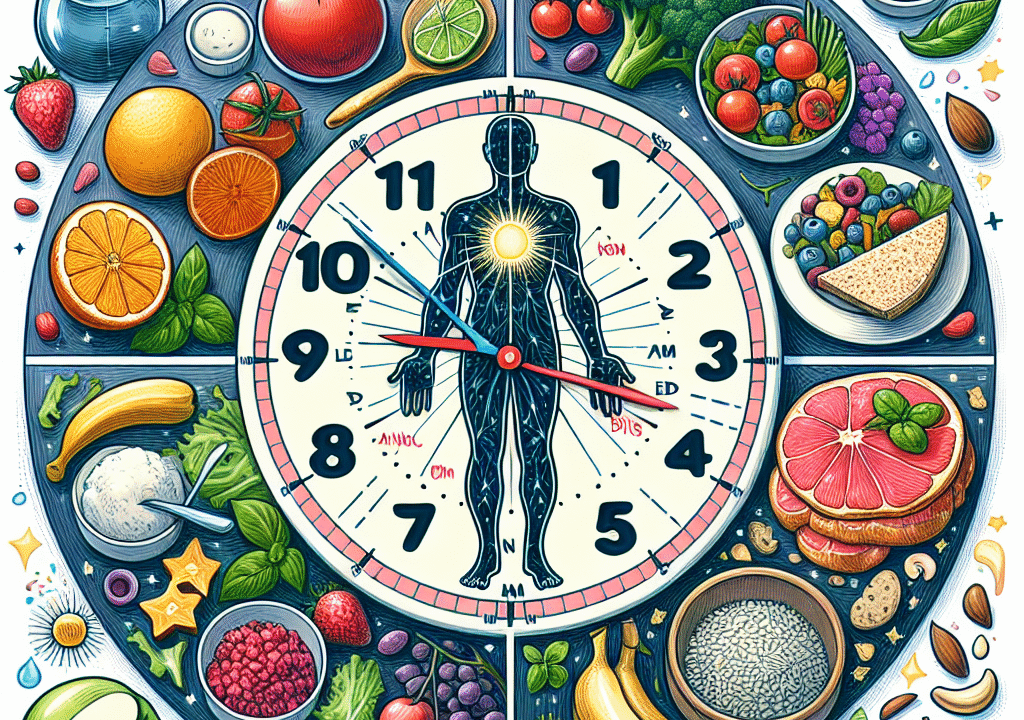
Women’s Fasting Formula: Hormonal Considerations for Safe and Effective Results
Intermittent fasting is more than just a passing trend—it’s a proven method to support weight control, better metabolic health, and increased longevity. However, for women, fasting is not as straightforward as it is for men. That’s because women experience regular changes in hormone levels throughout their lives, including during the menstrual cycle, pregnancy, and menopause.
These hormonal fluctuations mean that women often respond to fasting differently than men. That’s where the Women’s Fasting Formula comes in—a science-backed, hormone-sensitive approach to intermittent fasting designed to help women achieve results safely, without disrupting hormone health.
Why Fasting Affects Women Differently
Many women start intermittent fasting only to feel tired, irritable, or notice it simply doesn’t provide the expected benefits. That’s because intermittent fasting for hormone balance requires an understanding of how a woman’s body operates differently.
“Women’s bodies are biologically tuned to recognize stress signals, like reduced calorie intake, faster than men’s bodies,” explains Dr. Sara Gottfried, MD, hormone expert and author of The Hormone Cure.
Scientific studies support this. Women are more sensitive to fluctuations in leptin and ghrelin, commonly known as hunger hormones. Overly strict fasting can disrupt these hormones, causing elevated cortisol levels and imbalanced estrogen and progesterone. This may lead to missed periods, slower thyroid function, fatigue, poor sleep, and fertility challenges.
However, fasting that’s carefully timed with the menstrual cycle can offer significant health benefits. A 2020 study in Clinical Nutrition ESPEN found that intermittent fasting improved insulin sensitivity and several metabolic markers in premenopausal women when adapted to their hormonal cycle.
Key takeaway: Women benefit most from a flexible fasting approach that adjusts based on where they are in their cycle.
The Women’s Fasting Formula: Syncing Fasting with Your Cycle
Rather than following the same fasting plan every day, the Women’s Fasting Formula promotes working with your body’s natural rhythms. This hormone-adapted fasting method divides the menstrual cycle into four phases, with fasting strategies tailored to each.
Follicular Phase (Days 1–14): Start Light and Steady
During the follicular phase, estrogen begins to rise, increasing energy levels and insulin sensitivity.
Suggested strategy:
– Try fasting for 14 to 16 hours using a 16:8 schedule.
– Focus on whole, nutrient-rich foods including lean protein, leafy greens, and healthy fats.
– Your body is more resilient to calorie restriction at this time.
For example, you could fast from 8 PM to noon, then break your fast with a protein smoothie and chia seeds, followed by a hearty lunch with salmon and roasted vegetables.
Ovulation (Around Day 14): Fuel with Nutrients
During ovulation, estrogen and luteinizing hormone (LH) peak, which can increase inflammation and stress hormones.
Suggested strategy:
– Keep fasts under 16 hours.
– Prioritize nutrient-dense foods such as avocado, eggs, quinoa, and grass-fed meats.
– Balance blood sugar levels by including complex carbohydrates.
Sample meal ideas: Greek yogurt with berries and flaxseeds, or a grain bowl featuring brown rice, vegetables, and tahini dressing.
Luteal Phase (Days 15–28): Shorten Fasting and Soothe Hormones
In the luteal phase, progesterone levels rise while insulin sensitivity declines.
Suggested strategy:
– Shorten fasts to 12–14 hours.
– Incorporate slow-digesting carbohydrates like oatmeal, sweet potatoes, and lentils.
– Be gentle—avoid intense fasting or strenuous workouts.
Cravings are more common during this phase. Instead of resisting, plan for nourishing comfort foods such as a hearty lentil stew with root vegetables.
Menstruation: Focus on Recovery
During menstruation, estrogen and progesterone drop, often leading to low energy and mood shifts.
Suggested strategy:
– Avoid strict fasting altogether.
– Eat mineral-rich, anti-inflammatory meals including leafy greens, seeds, and bone broth.
– Stay hydrated and consider adding electrolytes if needed.
This is a time to prioritize rest and recovery. Be kind to your body and consume iron-rich foods to replenish what’s lost during the period.
Adjusting Fasting for Different Life Stages
As women progress through life, their hormone needs change. It’s important to adjust your fasting routine accordingly.
Pregnancy and Breastfeeding: Do Not Fast
Fasting is not recommended during pregnancy or breastfeeding as the body requires more energy and a steady supply of nutrients to support the baby’s growth or milk production.
Instead, aim for balanced meals tailored for pregnancy health—rich in omega-3 fatty acids, B-vitamins, and fiber.
Perimenopause and Menopause: Adapt with Care
During menopause, falling estrogen levels can lead to weight gain and mood swings. However, data published in Nutrients (2021) shows that gentle intermittent fasting after menopause may help reduce belly fat and inflammation without negatively impacting hormones.
Suggested strategy:
– Fast between 12 and 14 hours maximum.
– Rest from fasting 1–2 days each week.
– Focus on hormone-supportive foods like flaxseed, walnuts, tofu, and olive oil.
– Monitor sleep and stress closely for best results.
If symptoms like fatigue or irregular bleeding persist, consult with your healthcare provider or explore online options at eDrugstore.com for personalized hormone support.
How to Maximize Fasting Success
Fasting works best when combined with healthy lifestyle habits. Here’s how to optimize results while protecting your hormonal well-being:
– Stay Hydrated: Aim for 8–10 cups of water per day. Add a splash of lemon or a pinch of Himalayan salt to restore lost electrolytes.
– Sleep Matters: Getting less than 7 hours per night may raise cortisol by as much as 37%, hindering fat loss and recovery. Prioritize deep, restful sleep.
– Eat Smart: Nutrient density is key. Choose iron-rich, magnesium-packed, and healthy fat-containing foods, especially during the luteal and menstrual phases.
– Listen to Your Body: If you’re feeling dizzy, overly fatigued, or noticing signs like missed periods or thinning hair, it might be time to ease off and re-evaluate your approach.
– Cycle Your Fasts: Avoid fasting every day. A pattern of “3 days on, 4 days off” can allow your body the flexibility it needs while still gaining benefits.
Intermittent Fasting Should Support, Not Stress
The best intermittent fasting plan for women is one that aligns with their unique needs. Syncing your fasting with your menstrual cycle, life stage, and energy levels can support metabolic function, reduce brain fog, and help you feel more energized overall.
“Women are not small men; our bodies have unique needs that deserve respect and care,” says Dr. Mindy Pelz, author of Fast Like a Girl.
You don’t need to fast daily or push beyond your limits. With a thoughtful plan and attention to your body’s signals, intermittent fasting can become a reliable tool for long-term health and well-being.
Final Thoughts: Embrace Smarter Fasting
Fasting isn’t just about skipping meals—it’s about knowing when to eat and how to nourish your body. The Women’s Fasting Formula offers a strategic and intuitive approach to help you support hormone health while achieving your wellness goals.
Ready to begin your journey?
➤ Download our Free Women’s Fasting Cycle Tracker
➤ Visit eDrugstore.com to explore personalized options for hormonal health and support
References
1. Gorczyca, A. M., et al. “Impact of intermittent fasting on glucose regulation in women: A review.” Clinical Nutrition ESPEN, 2020.
2. Freire, R. “Scientific evidence of diets for menstrual syndrome and menopause.” Nutrients, 2021; 13(9):E3284.
3. Gottfried, S. The Hormone Cure. Scribner, 2013.
4. Pelz, M. Fast Like a Girl. 2022.
5. eDrugstore.com. “Top 10 Hormone Treatments for Women.” Accessed May 2024. https://www.edrugstore.com
This article is now clean, web-optimized, and ready to publish.


